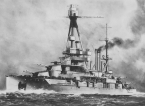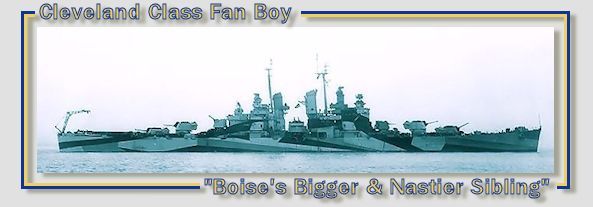FatR
Posts: 2522
Joined: 10/23/2009
From: St.Petersburg, Russia
Status: offline

|
Any answers to the questions in my last series of proposals, John?
Anyway, I'll start pitching general ideas for the air side, while you are thinking on it.
0)Combat airplanes are primarily defined by their engines. So let's look at Japanese aircraft engine development and production first.
Despite the bewildering array of designations, the picture is fairly simple:
- Nakajima produced the great majority of engines, used by Japanese aircraft during the war. Their main products were 14-cylinder Sakae (Ha-35) and its direct successor 18-cylinder Homare (Ha-45). Note here, that adoption of Sakae for most of fighters and bombers designed during the last years before the war meant that Homare will inevitably be the main late-war engine, because they used same cylindres and generally were quite similar, meaning that only Homare can replace Sakae in production. Then there were 14-cylinder Nakajima Ha-34, used by Tojos and Helens, and Mamoru (Ha-44), used only by Jills. Engines developed from these two late in the war did not reach service.
- Mitsubishi had two major engine families. Kinsei (Ha-33) was their equivalent of Sakae, and like Sakae it was eventually developed into 18-cylinder MK9 (Ha-43) engine, which, by the end of the war, was planned for installation on most of the aicraft remaining in production, that weren't supposed to use Kinsei, but, to my knowledge, none of them reached the front. Also, there was Zuisei engine (Ha-31), which was used on aircraft that didn't need much power, and it was basically a reduced Kinsei. Finally, Kasei 14-cylinder (Ha-32) was the most powerful Japanese engine at the beginning of the war, and one used by their heavier bombers. Unfortunately, its large radius caused problems with installation on single-engine fighters. A 18-cylinder version of Kasei (Ha-42) was developed as well, and AFAIK, actually used on late-production Ki-67s.
-Also, Kawasaki and Aichi independently copied the German DB601 inline engine, and that was the only inline engine widely used by the Japanese during the war. Kawasaki went much father with its modification and development, but their creation, Kawasaki Ha-140, was too unreliable.
Of course, all companies tried to use their own engines on their aircraft, unless directly pressured by their commissioners in the military to use something else.
1)As you can see from looking at what aircraft used what engines, Nakajima nearly cornered the market by 1942, with Sakae being used by both Army's and Navy's primary 1E fighters, Army's fighter-bombers and light level bombers, and Navy's torpedo bombers. Accordingly, Homare later seen equally wide use.
Unfortunately for Japanese, Sakae was the only good Nakajima design, and then only for 1E fighters. It was also almost at the limit of its improvement and reached it in the first half of 1942, leaving Zeros with the same horsepower for the rest of the war. Homare, its inevitable successor, was quite powerful for its size, and allowed to make good mid-war aircraft, but it also was notoriously unreliable, with every plane it was installed on suffering engine problems of varying severity. This contributed to great delays with mass production of some key plane types, like N1K and P1Y, and made most of the new Japanese planes heavily unreliable in the field. And by the war's end Homare also didn't have enough power.
Oh, and Ha-34 was not powerful enough for the planes it was supposed to propel. I know, the game flatters Ki-49 and Ki-44 quite a bit, but even in AE Ki-44 is a one-year wonder, no longer competitive by late 1943, which is a sign of failure in an aircraft that was introduced in 1942.
Equivalent Mitsubishi engines, meanwhile, had bigger volume, and therefore bigger reserves for improvement. Kinsei reached 1500-1560 hps by late 1943, as opposed to 1130-1190 hps of Sakae. It was also equally reliable, at least by mid-war. Similarly, MK9 would have been much more powerful than Homare, although its reliability in actual combat conditions, or, indeed, its possibility to reach the frontlines in time, are questionable.
2)You might figure out where I'm going by this point. I want to entrust the radial engine development to Mitshubishi, probably as the part of war emergency optimization of production, with the beginning of the real war in China in 1939. The existing diversity of engine types should frankly be seen as unacceptable for a country in dire economic odds. Heck, US developed only two major families of engines, throughout the war, one radial, one inline, plus the imported Packard-Merlin engine. USSR eventually stopped at three.
So, basically, Kinsei and MK9 replace Sakae and Homare everywhere, while Kasei replaces Ha-34. This change is not going to be free of cost (well, besides the fact that Nakajima execs will be added to list of people one needs to shoot in the process of implementing this alternative...). Early-war Zeros will probably have worse characteristics, particularly range (Sakae was very fuel-economical). I'll expand upon the huge hole this will blow in the historical IJA aircraft roster later (although this can be turned into a benefit...). And even with the priority given to development of the Kinsei engine and its successor, I think that introducing serviceable MK9s before 1944, and fully reliable ones before 1945, if ever, is a far too favorable assumption, so many late-war Jap aicraft still will struggle with high service ratings. But I think it is the only way to try keeping Japese engines at least not falling behind too badly in mid and late war.
Oh, and Aichi will be commanded to pool their efforts with Kawasaki in working on adapting DB601 for Japanese purposes, separate projects for Army and Navy by different companies are just a huge waste of resources... Hopefully this might help at improving reliability of their inline engines.
|
 Printable Version
Printable Version













 This is great I cannot wait to hunt Pappy Boyington with his own type of plane!
This is great I cannot wait to hunt Pappy Boyington with his own type of plane! 




 New Messages
New Messages No New Messages
No New Messages Hot Topic w/ New Messages
Hot Topic w/ New Messages Hot Topic w/o New Messages
Hot Topic w/o New Messages Locked w/ New Messages
Locked w/ New Messages Locked w/o New Messages
Locked w/o New Messages Post New Thread
Post New Thread